Azolla filiculoides (water fern)
Have you recently seen a pond, lake or ditch that looks pink or red? If so, you have almost certainly seen Azolla.
Azolla species are the world’s smallest, but most economically important ferns.
In many ways Azolla is a very atypical fern as it:
- is aquatic, floating on the surface of ponds and lakes, ditches and canals
- looks more like a leafy liverwort than a fern, having minute overlapping leaves
- propagates itself readily by breaking up to form separate plants
- reproduces by means of two kinds of very unusual spores
- often changes colour dramatically in autumn or winter - turning from green to a distinctive deep red colour
- contains a blue-green alga (cyanobacterium) called Anabaena azollae that fixes atmospheric nitrogen
The presence of the nitrogen-fixing cyanobacterium has led to Azolla’s use as a green fertiliser, particularly in rice paddies.
Unfortunately Azolla spreads so rapidly by vegetative propagation that it has become a widespread weed of water bodies in the UK and around the world. Biological control using a species of weevil is an alternative to using herbicides or physically removing the plants.
Species detail
-

Taxonomy
Take a close look at this fern’s leaves and discover what microscopic detail separates it from its close relatives.
-

Distribution and ecology
This Azolla species is native to the Americas, but has spread to most other continents. It thrives on ponds, lakes and ditches. Find out more about where this fern lives.
-

Biology
Azolla filiculoides produces 2 types of spore - large female spores and tiny male spores. Discover more about the reproductive strategies of this fast-growing fern and the nitrogen-fixing alga that lives in it.
-

Uses
Azolla has been used for centuries as a green fertiliser in rice paddy fields in Asia. It is of value in other ways too. Read on to discover what makes it so useful.
-

Conservation
Azolla filiculoides can be invasive and grow in thick mats on water surfaces, blocking out light and deoxygenating water. Find out what management procedures have been devised to control its spread.
-

References
Get reference material for Azolla filiculoides.
Distribution map
A map showing the British distribution of Azolla filiculoides
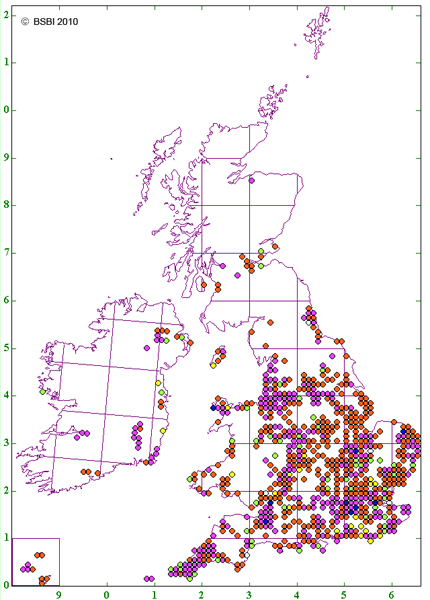
Map showing the British distribution of Azolla filiculoides. Pale blue, green and yellow dots represent pre-1987 records, red dots represent 1987 to 1999 records, pink dots represent 2000 to 2009 records, dark blue dots 2010 records.
This is a static version of an interactive hectad map, available on the Botanical Society of the British Isles Mapping Portal.
Images
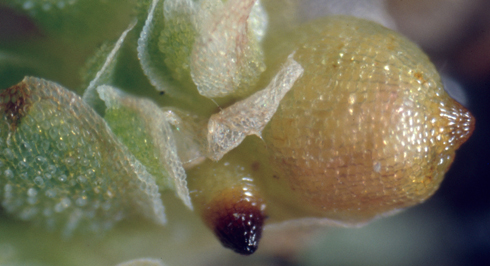
Azolla filiculoides: large microsporocarp on right, small megasporocarp with dark indusium cap on left. Photo credit: H Taylor.

Azolla filiculoides
© FJ Rumsey
Azolla filiculoides with the duckweed Lemna minor.
© Wikipedia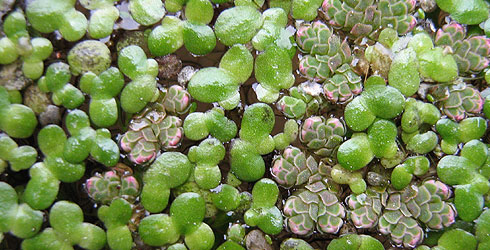
Azolla filiculoides with the duckweed Lemna minor
© Wikipedia
Azolla filiculoides at Royal Botanical Gardens, Kew.
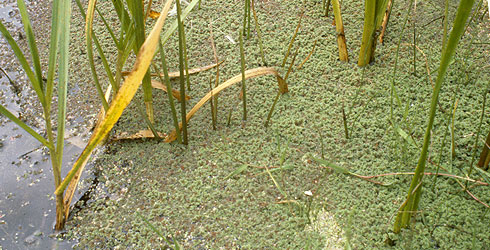
Azolla filiculoides in Norfolk
© AC Jermy

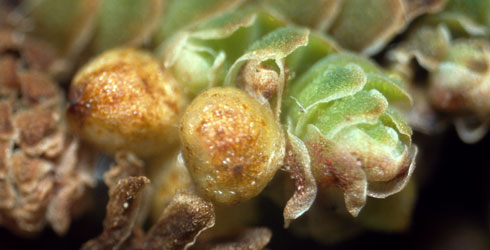
Azolla filiculoides 2 large microsporocarps with 1 small megasporocarp with dark indusium cap. Photo credit H Taylor.

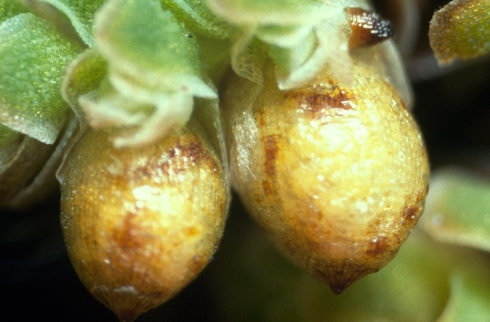
Azolla filiculoides 2 large microsporocarps with 1 small megasporocarp with dark indusium cap. Photo credit H Taylor.

Rice paddy in Iran. Azolla filiculoides was introduced to Iran as a green fertiliser for rice in 1986. It has since become a pest of Iran’s waterways and wetlands.
© Shalizar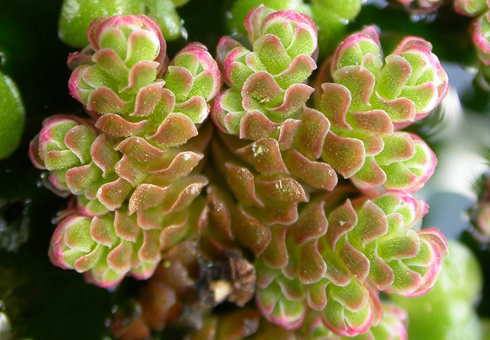
Azolla filiculoides
© FJ RumseyAbout the author

Alison Paul
Curator of Pteridophytes, Department of Botany.
A word from the author
"Azolla is a fascinating aquatic fern. It has a very curious life-cycle, and its minute leaves host a blue-green nitrogen-fixing alga that makes it economically important, whilst at the same time its rapid growth rate makes it a noxious weed."
Toolbox
Glossary
Eutrophic
Rich in nutrients.
Glochidia
Barbed hairs on massulae.
Heterosporous
Having 2 kinds of spores.
Indusium
Tissue that protects the sporangia.
Massula
Mass of microspores and associated tissue (term is also applied to female ‘floats’ in the megaspore apparatus).
Megaspore
Female spore.
Microspore
Male spore.
Monophyletic
Descended from a single common ancestor.
Papilla
Minute projection on the surface of a leaf.
Prothallus
Fern gametophyte.
Sporangium
Spore capsule.
Sporocarp
Structure that contains the sporangia.
Symbiont
An organism in a close and long-term association with another species.
